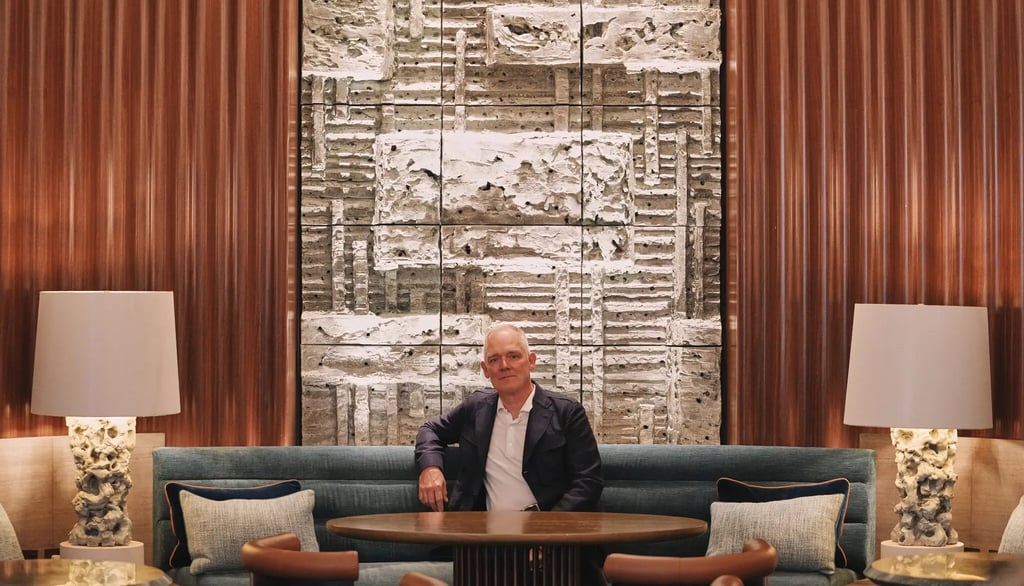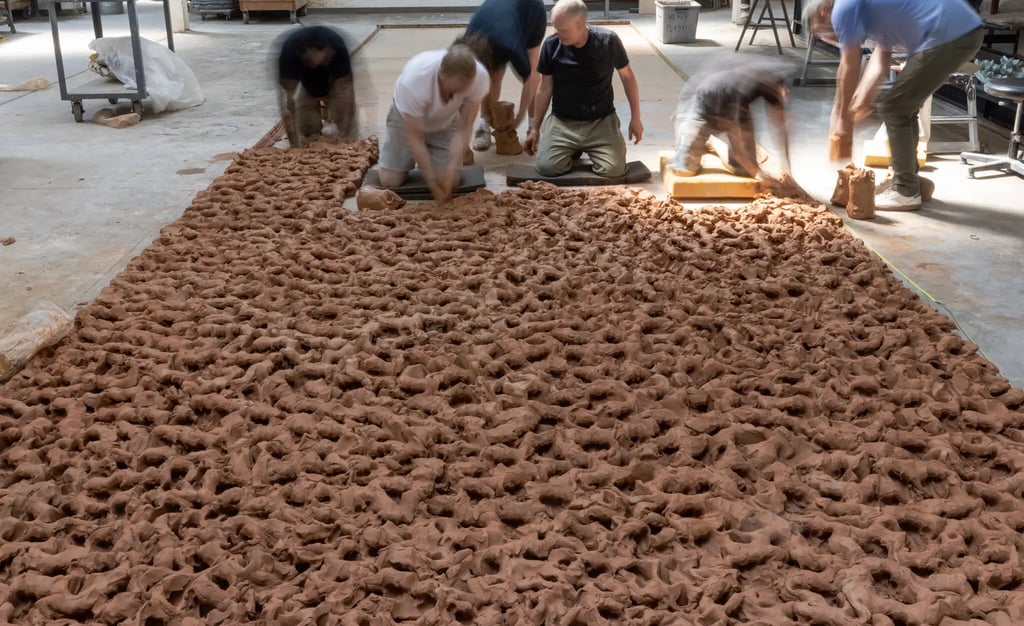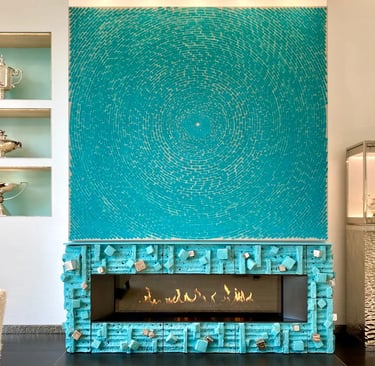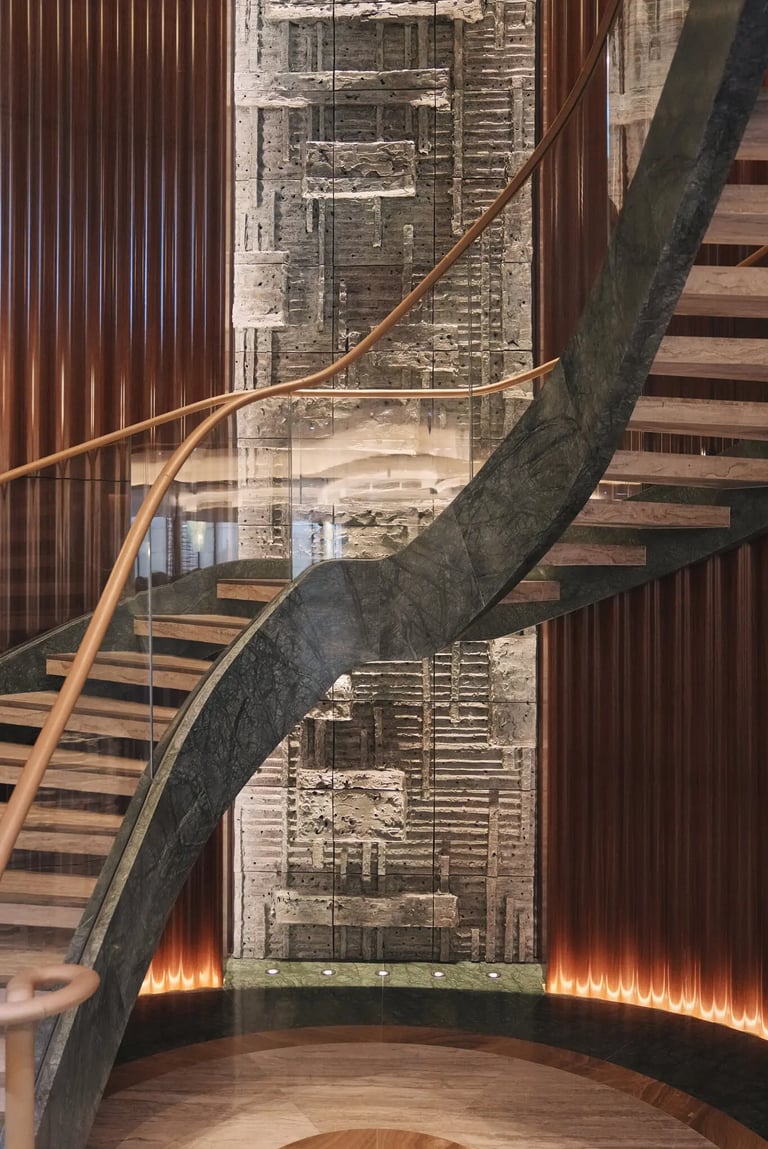Discovering the Elegance of Peter Lane's Work at the Cartier Store
6/13/20246 min read


Introduction to Peter Lane's Masterpieces
When you think of Cartier, exquisite jewelry and timeless elegance come to mind. Recently, the renowned brand has been showcasing the exceptional craftsmanship of Peter Lane, a name synonymous with innovative design and unparalleled artistry. If you haven't yet explored his creations, it's time to visit the Cartier store and see his work firsthand.
Why You Should Visit the Cartier Store
The Cartier store is more than just a retail space; it's a showcase of artistry and luxury. By visiting, you get the unique opportunity to appreciate Peter Lane's work in person. His pieces are not only a display of technical skill but also a testament to creativity and imagination. Seeing these masterpieces up close allows you to experience the intricate details and craftsmanship that make them truly extraordinary.
Exploring Peter Lane's Unique Design Philosophy
Peter Lane's work is characterized by a blend of traditional techniques and contemporary aesthetics. Each piece he creates tells a story, blending materials and forms in ways that challenge conventional jewelry design. His approach is both innovative and respectful of the rich heritage of jewelry making, making his work a perfect fit for Cartier's esteemed collection.
A Visit to Remember
Whether you are a jewelry enthusiast or simply appreciate fine craftsmanship, a visit to the Cartier store to see Peter Lane's work is a must. His pieces are not just accessories; they are works of art that reflect a deep understanding of beauty and form. So next time you find yourself near a Cartier store, take a moment to step inside and explore the brilliance of Peter Lane's creations. It's a visit you won't soon forget.
Since the late 1990s, the ceramic artist Peter Lane has been creating custom installations for private clients, including an exterior wall with a bronze-color ceramic glaze on an oceanfront house in the Mexican resort community of San José del Cabo.
Lately, he also has taken on more public-facing work, like a piece for Tiffany & Company’s renovated Fifth Avenue flagship, and one for Cartier’s recently reworked boutique a few blocks away. His creations are in Chanel stores in cities including Rome, Madrid and Beijing, and on Dior Fine Jewelry counters in cities such as Geneva and Dubai. Most recently, two pieces by Mr. Lane were unveiled at the Four Seasons Hotel London at Park Lane.
“I bring the same level of attention to all of my commissions,” Mr. Lane, 65, said on a stormy day during an interview at his 10,000-square-foot studio, located in a former plastic bag factory in the Bushwick neighborhood of Brooklyn. “The difference between something that I do for someone’s private home and one of these commissions for either a store or a hotel is that it’s something that I can share with the public. I can tell my friends, ‘Go see my work at the Cartier store.’”




Many of his pieces are, essentially, ceramic murals, from 6 feet to about 50 feet wide, often with patterns that bring to mind the Abstract Expressionist painters like Franz Kline and Barnett Newman. But there also are lamps, like those he has been making for Dior Fine Jewelry, and fireplaces, such as the Tiffany piece, made in a color that Mr. Lane said was inspired by the famous Tiffany Blue and adorned with ceramic cubes covered in platinum leaf. The pieces deliberately show their origins: intensely textured and a bit rugged, and as much art as interior decoration.
Both of his Four Seasons installations — tactile, abstract sculptures finished with an oxidized verdigris glaze, one of which stretches between two floors — are in the hotel’s Bar Antoine. They help give the space an elegance, Mr. Lane said, that feels as if it’s in “a 1930s movie that you’d come down the stairs in a tuxedo and a cigarette, but it’s much more contemporary.”
The sculptures were commissioned by the interior designer Chahan Minassian, who recently redesigned the hotel’s dining areas and will be handling a renovation of the hotel’s lobby. Mr. Lane has created many pieces for Mr. Minassian, including one for the renovation of the Hôtel de Crillon in Paris, which Mr. Minassian directed. And he has worked with Emily Summers, Joe Nahem and Peter Marino, who commissioned the Tiffany, Chanel and Dior projects.
“He has epic know-how to master his ceramic work,” Mr. Minassian said. “Added to that, there’s his sculptural quality, and his hands, and his vision of how shapes and forms are being created.


It’s now his true signature: No one else does that. You immediately recognize his work.”
Sam Cochran, the global features director of Architectural Digest, echoed the sentiment. “He is one of these people who can take on a project of any scale, which I think is what attracts so many designers to his practice,” Mr. Cochran said. “People really come to him to inject some handcrafted magic into a space, and to layer in that feeling of the hand of the artist.”
Mr. Lane has a complex process. After sketches are made and a design is confirmed, a custom-blended formula of coarse-grain sculpture clay — typically two to eight tons — is ordered from his supplier.
Once the clay is delivered by truck, it is smooshed and squished inside a thin steel frame that is the size of the finished piece. That alone can take a couple of days, with most of Mr. Lane’s 10 staff members involved, and music, from hardcore rap to opera, blaring in the background. Design patterns and flourishes are added throughout by Mr. Lane, using a sharpened dowel.


The clay eventually stiffens a bit, and, with the help of a custom-made scythe-like knife, a grid is cut into the surface to divide the piece into sections. The clay is left to dry, which typically takes several weeks, and then is fired (sometimes several times) at temperatures often exceeding 2,000 degrees Fahrenheit in one of the studio’s five custom kilns.
Developing the method “has been a long process and something that we had to invent from scratch,” Mr. Lane said. “There wasn’t a place I could learn to do it.”
Although Mr. Lane won’t disclose his prices or the annual revenue of his wholly owned company, he said that some of the larger installations cost more than $1 million.
Mr. Lane said that as a child, he had no plans to be a professional artist. He grew up in Oak Park, Ill., near Chicago; his father was a doctor and his mother was a nurse. He studied at both Lawrence University in Wisconsin and the Penland School of Craft in North Carolina, but he left without earning degrees and went to New York City in 1981. He moved into the East Village neighborhood, where he still lives, and supported himself with jobs such as picture framing.
Around 1994 (he doesn’t recall the exact date), he was inspired by a selection of midcentury pottery that he spotted in a Miami Beach curio shop during a weekend trip with friends. On his return to New York, he signed up for evening pottery classes at Greenwich House Pottery, a school founded in the early 20th century, and quickly found his calling.
“It really was like a visceral connection for me when I started working in clay,” Mr. Lane said. “It was very clear, very quickly, that I didn’t care about anything else — that’s really what I wanted to do. So fortunately for me, I found a way to turn that into a larger practice.”
More classes followed and, starting in 1994, he began to get commissions: His first client was William T. Georgis, an interior designer, who ordered a lamp. Mr. Lane said he was paid $300, more than his monthly rent at the time. Word of his work spread, and by 1996, he had orders from acclaimed figures in the design world such as Mr. Marino and the architect Lee Ledbetter.
Three years ago, Mr. Lane introduced a book publishing imprint, Scholes Press, to issue books documenting his own work as well as pieces by artists he admires, like the ceramists Trevor King and, next year, Shizue Imai. (His studio is on Scholes Street.)
“I love beautiful books, so it was a way to share information and tell a story,” he said. “It’s different than making sculpture. It’s a way of communication of my work, and also communication work of other people I love.”